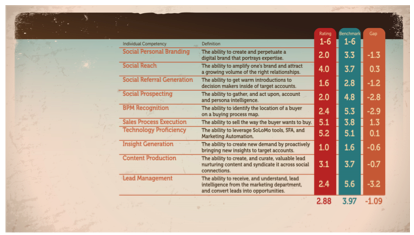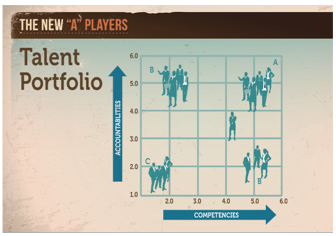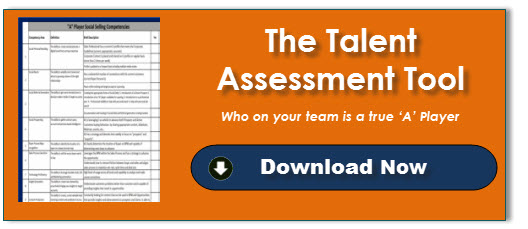At this point, your 2013 sales number is essentially decided. Your thoughts should now turn to 2014. How will you attack the New Year with confidence? Do you have the team you need to have a successful Q1?
If you fell short of your number this year, there are reasons. It is very possible that those reasons lie within the team you have assembled. Chances are, there are unfortunately some weak links in your team. I speak with many VP Sales who say the same thing every year: “We have some underperformers that are killing us.” There are a few key steps to addressing this that I’ve outlined below.
Before you really make any decisions, start with these questions:
- What are my key strategic initiatives for 2014?
- Do I have the right talent on my team to meet these initiatives?
- Is my talent aligned to accomplish this objective?
- Has my team evolved with the new buyer?
- Do I have my talent in the right place and on the right accounts?
Don’t allow yourself to continue feeling out of control. Seize control of your destiny.
Don’t Waste Time or Money on Bad Talent
Bad talent doesn’t necessarily mean anyone underperforming. It means talent that cannot be turned into a contributor. See the breakdown below:
- ‘C’ Players – These team members are going to be left behind. If they are a ‘C’ Player, it is very doubtful they can become contributors. Do not take them to SKO. It’s foolish to spend additional money on someone who will end up missing quota yet again in 2014. They should be let go to seek other opportunities where they might be more successful.
- ‘B’ Players – These team members can go either way. I’d suggest taking some time and splitting them into two groups. The first group is ‘B’ players that can become ‘A’ players in 18 months. The second group is ‘B’ players who cannot. Have a conversation with other managers if need be to get a handle on it.
Download the SBI Talent Assessment Tool. Discover which competencies create ‘A’ Players. See where your team members fall on this scale.
There are some ‘B’ Players who have already tapped out and won’t contribute more than they did in 2013. These should be lumped in with ‘C’ Players. If they can’t reach their full potential here, perhaps they can elsewhere.
Then there are the ‘B’ Players who are poised to take their next step in 2014. Those are the ones who you want to invest in. Invite them to SKO. Build out a plan for training them and turning them into ‘A’ Players ASAP.
- ‘A’ Players – You’re clearly going to bring these team members to SKO. The next step is to make sure you are getting the most out of them. Make sure you are giving them enough work and responsibility. Are they in the right territories? Are they leveraging their own personal brand? At this point ‘A’ Players should be very involved in Social Selling. Get all you can out of these guys, because you don’t come across them all that often.
Assessing Your Sales Team
Assessing your sales team talent isn’t always easy. I suggest creating a scorecard to determine which players on your team make the cut. You can use the guidelines below as a template. There are five main parts to the process.

1) Create a specific scorecard to determine which players on your team make the cut:
- Assess Competencies – Do your sales team members hold the attributes required to reach the 2014 performance objectives? In other words, do they have ‘A’ Player competencies? This type of team is what will allow you to make your number in 2014. Examples include: Selling skills, selling knowledge, intelligence, and people skills.
- Explore Accountabilities – Do your sales team members have the qualities (e.g. character, culture, chemistry, goals) to mesh with the business and thrive in the role? Some people are skilled, but may not fit with the culture. This may be okay in the short term, but is tough to sustain. The real ‘A’ Players will meet both the Competency and Accountability criteria.
2) Immediately conduct assessments of your entire sales organization using the scorecard you’ve created (Competencies & Accountabilities). In order to determine their roles for 2014 (either inside or outside the organization) you need an unbiased and objective analysis. You may want to engage a third party expert who can do this for you.
3) Plot your A / B / C Players on a Grid in order to get a visual understanding of who is performing and who isn’t. See the Grid below as a sample. You’ll end up with clear A’s, C’s, and two different varieties of B’s.

4) Terminate the C player today. As I mentioned above, the time for coddling is over. You’ve determined these players aren’t capable. What will change in 2014? Likely nothing. They get terminated, and the level of the team elevates because of it. Plus, it’s likely they aren’t happy with the situation currently either.
5) Reallocate the C player territory to your A players. The ‘A’ Player is a fine-tuned machine capable of greatness. Put them into the absolute best territory. It has the most potential and they deserve it. They’ve earned the opportunity to shine. Let them seize the day and help you make your number in 2014.
This process clearly indicates to your sales team that you won’t tolerate under-performers (‘C’ Players). Your ‘A’ Players are going to welcome the new opportunities they can add to their pipeline this year. Make no mistake about it – this dramatically improves your chances of achieving the 2014 goal.
Get a clear picture about your sales team talent. Download the SBI Talent Assessment Tool and find out who on your team is a true ‘A’ Player.
It’s possible that your talent is depleted. In this event, you may end up letting multiple reps go. My next blog discusses Landing Top-Tier Sales Talent. Stay tuned. You’ll then know how to get the most out of your current team, as well as bring in the best talent possible. The end result? A team of ‘A’ Players that will surpass your number time and again.




